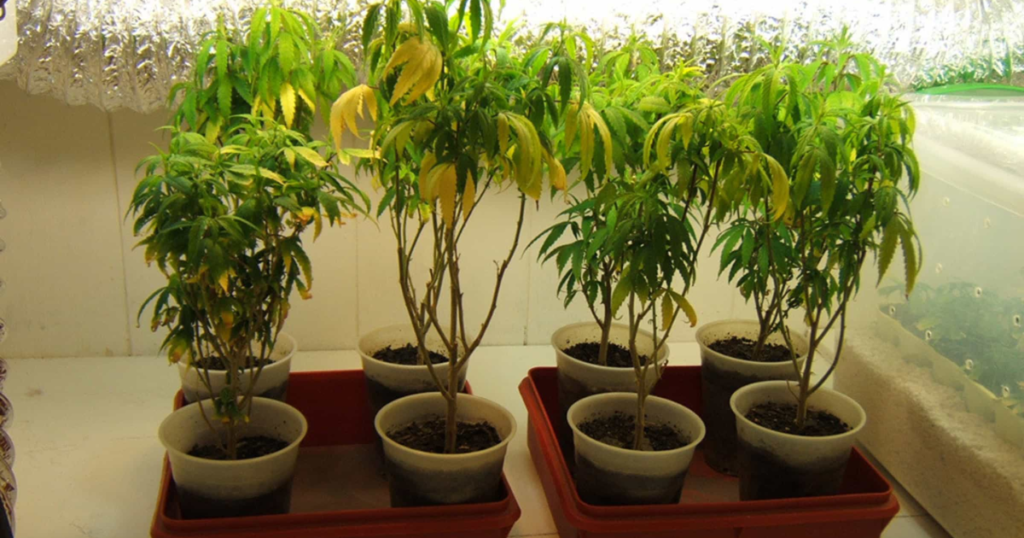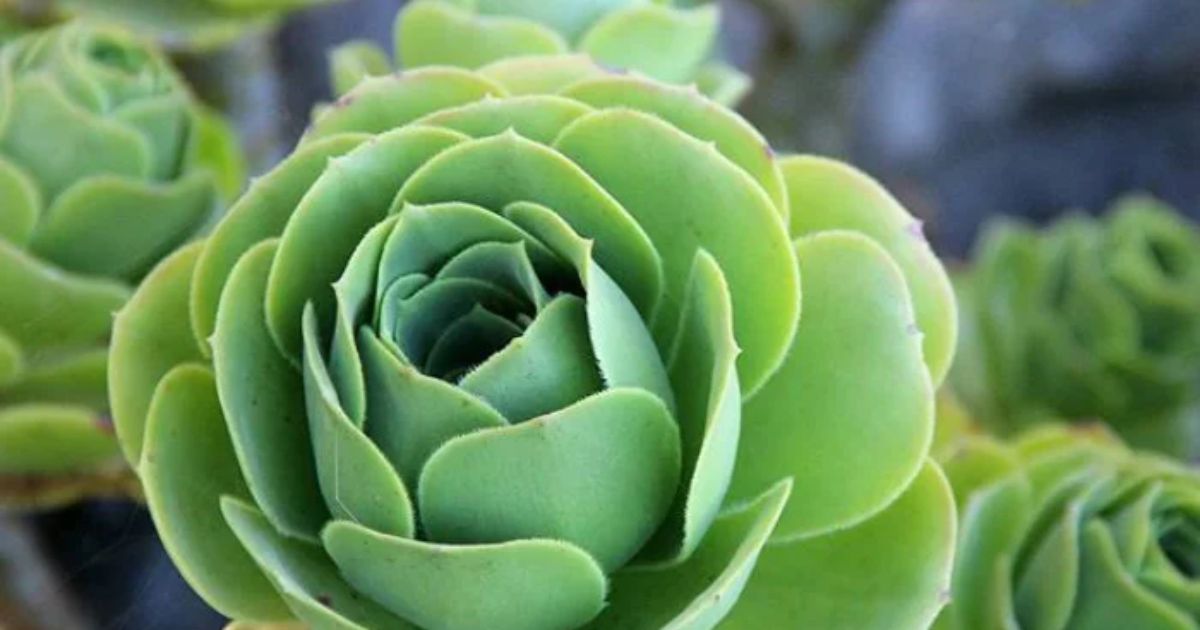An underwatered succulent appears wilted and shriveled, with its leaves losing their plumpness and resilience. The lack of water causes the succulent to show signs of distress, as the normally turgid leaves become limp and folded. The color may fade, and the overall appearance becomes lackluster.
What does an underwatered succulent look like? Imagine a once-vibrant plant now displaying a subtle plea for moisture. The leaves, which were once firm and vibrant, now seem deflated and sad. It’s as if the succulent is signaling its need for a refreshing drink, with the very essence of its vitality hanging in the balance.
In addition to wilting and loss of plumpness, other indicators reveal what an underwatered succulent looks like. The soil around the plant may appear dry and cracked, and the leaves might develop wrinkles or creases. The succulent may also shed leaves as a survival mechanism to conserve moisture.
Underwatering Crispy Brown Leaves
When a succulent experiences underwatering, one of the most noticeable signs is the development of crispy brown leaves. The lack of sufficient water causes the plant’s cells to lose turgor pressure, resulting in the wilting and browning of the leaves.
This visual cue is a clear indication that the succulent is in need of immediate hydration. To remedy this, a thorough watering session is essential, allowing the roots to absorb the moisture needed to revive the dehydrated plant.
Underwatering Wilting, Drooping Leaves

Another telltale sign of underwatering in succulents is the wilting and drooping of their leaves. When deprived of an adequate water supply, succulents lack the necessary support to keep their leaves upright. This gives the plant a limp appearance, signaling a state of distress. Addressing this issue promptly involves adjusting the watering frequency and ensuring that the succulent receives enough water to regain its upright and healthy posture.
Underwatering Soil Pulling Away From the Sides of the Pot
A visible indicator of an underwatered succulent is the soil pulling away from the sides of the pot. As the plant experiences water scarcity, the soil contracts, creating gaps between the soil and the pot’s edges. This phenomenon is a consequence of the soil drying out and can lead to uneven hydration for the succulent. To counteract this, a thorough watering session is necessary, allowing the soil to rehydrate and re-establish contact with the sides of the pot.
Underwatering Dry, Crispy Leaf Tips
Dry and crispy leaf tips are another manifestation of an underwatered succulent. As the plant struggles to retain moisture, the tips of the leaves become dehydrated, leading to a brittle texture. This visible symptom indicates that the succulent is in need of increased water intake. If you’re wondering how to propagate succulent leaves in water, a useful method to address this issue is by carefully removing healthy leaves from the plant and placing them in water.
Allowing the leaves to propagate in water can stimulate root growth, eventually leading to new, healthy succulent plants. In addition to this propagation technique, providing a generous watering and ensuring water reaches the roots can help alleviate the dry leaf tips issue, promoting the recovery of the succulent’s overall health.
Underwatering Slow or No Growth
Underwatered succulents often exhibit slow or no growth. The limited water supply hinders essential metabolic processes, stunting the plant’s development. If you notice that your succulent is not showing the expected signs of growth, despite adequate sunlight, it may be an indication of dehydration. Adjusting the watering routine and ensuring the plant receives enough water to support its growth is crucial for fostering a thriving succulent.
Ways To Save Your Underwatered Succulent
If you find your succulent in a state of dehydration, there are effective ways to save it. Begin by providing a thorough watering, allowing the soil to absorb moisture. Additionally, consider repotting a succulent to ensure proper hydration and nutrient availability. Monitor the plant closely, adjusting your watering routine to meet its specific needs. With attentive care, an underwatered succulent can bounce back, displaying signs of vitality and resilience.
Tips To Prevent Underwatering of Your Succulents
Preventing underwatering is key to maintaining the health of your succulents. Establish a consistent watering schedule, taking into account the specific needs of each succulent species. Ensure proper drainage in your pots to avoid waterlogging, and use well-draining soil to promote optimal water absorption.
Regularly check the moisture level in the soil and adjust your watering routine based on environmental factors such as temperature and humidity. By adopting these proactive measures, you can prevent succulents from experiencing the detrimental effects of dehydration.
Overwatered vs Underwatered Succulent
To distinguish between overwatered and underwatered succulents, refer to the following table summarizing key differences:
| Indicator | Underwatered Succulent | Overwatered Succulent |
| Leaf Condition | Crispy brown leaves | Soft, mushy leaves |
| Leaf Appearance | Wilting, drooping leaves | Leaves appear translucent and may be yellow |
| Soil Condition | Soil pulls away from the sides of the pot | Soil is consistently damp or waterlogged |
| Leaf Tips | Dry, crispy leaf tips | Swollen and soggy leaf tips |
| Growth Rate | Slow or no growth | Excessive, but weak growth |
This table serves as a quick reference guide to help succulent enthusiasts identify whether their plants are underwatered or overwatered. By paying attention to these indicators, you can tailor your care routine to meet the specific needs of your succulents, promoting a thriving and balanced growth environment.
FAQ’s
How can I tell if my succulent is under watered?
Underwatered succulents often display crispy brown leaves, wilting, and soil pulling away from the pot’s edges.
What should I do if my succulent has crispy leaf tips?
Provide a thorough watering session to rehydrate the succulent and prevent further dehydration-related issues.
Can overwatering mimic the signs of underwatering in succulents?
Yes, overwatered succulents may show similar symptoms, such as wilting and leaf discoloration, but with distinct differences like soft, mushy leaves.
How can I save an underwater succulent?
To save an underwatered succulent, give it a generous watering, consider repotting, and closely monitor its recovery progress.
What preventive measures can I take to avoid underwatering?
Establish a consistent watering schedule, ensure proper drainage, use well-draining soil, and monitor environmental factors to prevent succulents from experiencing dehydration.
Conclusion
In the world of succulents, understanding the signs of an under watered plant is crucial for their well-being. By recognizing the subtle cues, such as crispy brown leaves and wilting, caretakers can intervene promptly, providing the necessary hydration to bring the succulent back to life. Remember, a dehydrated succulent is like a silent messenger, signaling its need for water through its appearance. With attentive care, a watchful eye, and a commitment to meeting their hydration needs, succulents can thrive and display their vibrant beauty.
So, as you embark on your succulent journey, pay close attention to the language of your plants. The visual indicators speak volumes, guiding you to adjust your care routine accordingly. As you witness the transformation of wilted leaves becoming plump and vibrant, you’ll experience the rewarding journey of nurturing and revitalizing these resilient and fascinating desert dwellers.










